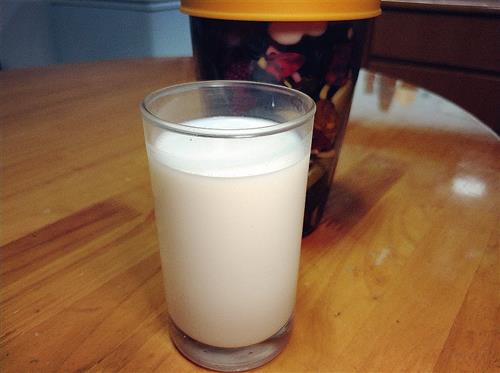Milk is best for children but don't drink milk as water
Does the baby have to drink formula milk all the time?
Not so! The child erupted from the first six months after birth and had a baby tooth within two to three years. At this time, she has basic chewing ability. However, the baby's esophagus is short and narrow, and the digestive juice secreted by the stomach gland is low in acidity and poor in digestibility. The absorption function of the small intestine is stronger than adults. Therefore, as long as the children do soft and easy to digest food, children can use food to get nutrition. Adding complementary foods from six months to the child's two-year-old can already eat a lot of foods. At this time, we can use natural foods to supplement children's nutrition, and gradually add the children's milk to the children's broken formula.

Milk is rich in nutrients, easy to digest and absorb, inexpensive, and convenient to eat. It is the closest to perfect food, and it is called "white blood." It is the most ideal natural food. Its native nutrition is no other artificial nutrition. Comparable. The types of minerals in milk are very rich. In addition to the calcium we know well, there are many contents of phosphorus, iron, zinc, copper, manganese and molybdenum. Every 100 grams of milk contains 87 grams of water, 3.3 grams of protein, 4 grams of fat, 5 grams of carbohydrates, 120 milligrams of calcium, 93 milligrams of phosphorus, 0.2 milligrams of iron, 100 units of vitamin A140, 10.04 milligrams of vitamin B, and 20.10 milligrams of vitamin B Niacin 0.2 mg, vitamin C1 mg. Available for heat 69 kcal. The most difficult thing is that milk is the best source of calcium in the human body, and the calcium and phosphorus ratio is very suitable for the absorption of calcium.
A recent study by nutritionists at the University of Vermont in the United States shows that if a child needs to calculate the basic amount of milk he needs for drinking within 2 months of birth, the ideal amount of milk to drink is 150 ml per kilogram of body weight per day; 3-6 Months, no more than 900 ml per day; 7-12 months, total 600-800 ml per day. For children between the ages of 1-3, it is recommended not to drop below 600 ml per day. Children over 3 years old drink a glass of milk every day. If you want to add more dairy products, you can drink a small cup (100ml-150ml) yogurt. Daily intake of dairy products is recommended not to exceed 500 ml.
And if you drink more than 800 milliliters of milk a day, in addition to the calcium intake will be close to the tolerable upper limit, the light from the milk intake of energy will be more than 2,000 kJ, about half of which is from fat. According to nutrient intake requirements, the daily energy intake of a 1-year-old baby is only about 3500 kJ. Over time, you should be able to see the baby's more rounded face.
Therefore, on the question of how much milk to drink, we give such a reference:
1, If ​​there is no milk allergy or lactose intolerance and other issues, babies over 1 year old can start drinking milk;
2,1 year old baby should start drinking from whole milk first, after 2 years old, according to the situation, start to consider whether to switch to skim milk (in other words, see if you still need to consume so much fat);
3, It is recommended that the baby can drink 2 cups (500ml) of milk per day. Of course, if you also provide your baby with formula milk or other dairy products, it will be reduced accordingly.
4. It is recommended that the baby not drink more than 3 cups (800 milliliters) of milk a day. This is not to say how it would be harmful in the next day or two, but do not have the bad eating habit of drinking too much milk every day, let alone milk. When the water is drinking.
Milk and any food are the same, do not need to demonize it, do not deify it, grasp our "moderate" attitude to life of old ancestors is good.
Lycopene, a carotenoid found in plant foods, is also a red pigment. Dark red acicular crystal, soluble in chloroform, benzene and grease but insoluble in water. Unstable to light and oxygen, turning brown when met with iron. Molecular formula C40H56, relative molecular mass 536.85. The molecular structure has 11 conjugated double bonds and 2 unconjugated double bonds, constituting a straight chain type hydrocarbon. It does not have the physiological activity of vitamin A, but it has strong antioxidant function. The content is higher in the fruits of mature red plants, especially in tomato, carrot, watermelon, papaya and guava. It can be used as pigment in food processing and as raw material of antioxidant health food.
Lycopene,Tomato Extract,Lycopene Powder,Lycopene Oil
Shaanxi Zhongyi Kangjian Biotechnology Co.,Ltd , https://www.zhongyiherbs.com